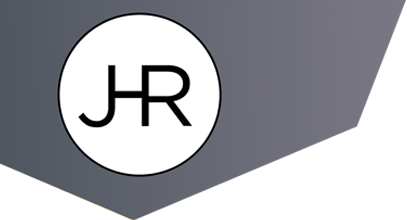What should you do if you’ve discovered that your copyrighted work has been posted somewhere on the internet that you have not authorized?
One option is to send a DMCA Takedown Notice, which is a mechanism that content creators can use to request that a website host, search engine or Internet Service Provider (ISP) remove materials on their platforms that are infringing on their copyright.
DMCA stands for the Digital Millennium Copyright Act, which was passed in 1998 as a series of laws designed to protect copyrighted content on digital mediums. It essentially provides a remedy for the content creator to have their text, audios, videos, photos and other graphic materials quickly and easily removed from the internet if they have been stolen by someone else.
You do not have to have a registered copyright to assert your rights and utilize a DMCA Takedown Notice, but there are very specific procedures that you must follow in order for your request to be granted by the website host or ISP:
First, before sending a DMCA Takedown Notice, you’ll need to be sure that the infringement of your copyright is not covered by a legal exception such as Fair Use of your content or free speech. When you send a DMCA Takedown Notice, you are essentially saying that you are in good faith bringing the action because someone is violating your copyright and the use is not covered by any applicable law.
The next step is to send your DMCA Takedown Notice to the web host or service provider. The laws within the DMCA protect such companies from copyright infringement suits if they follow very specific procedures to remove the offending content after receipt of a DMCA Takedown notice. However, it’s important to keep in mind that if a web host is not in the United States, they might not have to comply with the laws under DMCA.
Finding who hosts the content that is in violation of your copyright can be tricky. There are a number of free sites that you can use to try to track down the host of a site, including the WHOIS Lookup. You can also run a basic Google search to try to find this information.
Next, you’ll need to pin down the exact person to send your DMCA Takedown Notice to, who is called the Copyright Agent. Most major companies like Facebook, Google and Pinterest have pages on their sites that offer DMCA form letters and instructions on where to send your DMCA Takedown Notice. Other common places where DMCA Takedown information may be located might fall under tabs for “legal,” “terms of use,” or “copyright.” Finally, you can search the U.S. Copyright Office Directory of Copyright Agents to help locate the copyright agent.
Again, most major websites and hosting providers have form letters that you can fill out to assert your rights. If the website does not have a form, you’ll need to draft a DMCA Takedown Notice yourself. By law, your letter must contain the following elements of notification:
(i) A physical or electronic signature of a person authorized to act on behalf of the owner of an exclusive right that is allegedly infringed.
(ii) Identification of the copyrighted work claimed to have been infringed, or, if multiple copyrighted works at a single online site are covered by a single notification, a representative list of such works at that site.
(iii) Identification of the material that is claimed to be infringing or to be the subject of infringing activity and that is to be removed or access to which is to be disabled, and information reasonably sufficient to permit the service provider to locate the material.
(iv) Information reasonably sufficient to permit the service provider to contact the complaining party, such as an address, telephone number, and, if available, an electronic mail address at which the complaining party may be contacted.
(v) A statement that the complaining party has a good faith belief that use of the material in the manner complained of is not authorized by the copyright owner, its agent, or the law.
(vi) A statement that the information in the notification is accurate, and under penalty of perjury, that the complaining party is authorized to act on behalf of the owner of an exclusive right that is allegedly infringed.
[17 U.S.C. 512(c)(3)]
Be sure to include all of this information in the manner that is requested by the web host or ISP. If the site requests that a fax is sent and you insist on sending an email, they might not have to honor your request.
Finally, if your notice contains all of the necessary items listed above, the website or host should remove your content within a reasonable time, provided that the infringer does not file a counter notice, which they have the option to do.
Keep in mind that filing a DMCA Takedown Notice is just one tool that’s available to stop others from using your copyrighted material online. If you are not successful in having your stolen content removed this way, or you can not locate the correct party to send your DMCA Takedown Notice to, you can contact a copyright attorney who can assist in your search and help you utilize other legal options to protect your intellectual property and sue for damages, if necessary.
DISCLAIMER: The information contained in this article is for informational purposes only and is not legal advice or a substitute for obtaining legal advice from an attorney.
Call our office today to start moving toward achieving your goals.
Call 888-666-0062
New York Offices
(by appointment only)
-
155 Water Street
Brooklyn, New York 11201 - Phone: (718) 246-8482
- [email protected]
Charleston Offices*
(mailing address)
-
210 Rutledge, 2nd Floor
Charleston, SC 29403 - Phone: (888) 666-0062
- [email protected]
*Our South Carolina office will be limited to federal law (Registered to Practice before the US Patent & Trademark Office, Admitted in New York only. Not a member of the South Carolina Bar.
“Attorney Advertising”. Disclaimer and Website Privacy
© 2021 The Law Office of Jason H. Rosenblum PLLC . All Rights Reserved. Site by Web Done Well.




